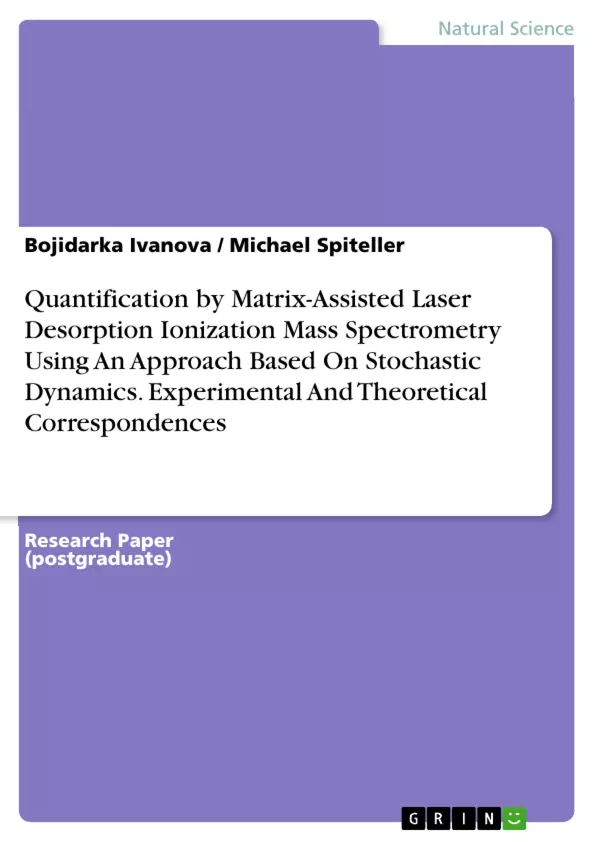The goal of this work is to describe more recent developments in the quantitative mass spectrometry and to illustrate how our new model equations based on the stochastic dynamics relate to the determining the 3D molecular and electronic structures of analytes. It is aimed at researchers in Chemistry who would like to find out about what is going on in mass spectrometric methodological contributions more recently. The work could also be used to MSc and PhD students in the field of Chemistry, in particular, highlighting the ‘Analytical chemistry’, ‘Physico–chemistry’ and/or ‘Computational and theoretical chemistry’, respectively.
Inhaltsverzeichnis (Table of Contents)
- PREFACE
- ABSTRACT
- ACKNOWLEDGMENTS
- KEYWORDS
Zielsetzung und Themenschwerpunkte (Objectives and Key Themes)
This work investigates quantitative mass spectrometry and utilizes stochastic dynamics to model the behavior of analytes under matrix-assisted laser desorption/ionization (MALDI) and electrospray ionization (ESI) mass spectrometric (MS) conditions. It aims to provide researchers with a deeper understanding of recent advancements in mass spectrometric methodologies.
- Quantification of analyte MS intensity using stochastic dynamics
- Application of the Box-Müller method for approximating the Maxwell-Boltzmann distribution
- Correlation of experimental diffusion parameters with theoretical molecular and electronic structures
- Exploration of MALDI-MS's capability to elicit 3D structural information about analytes
- Empirical verification and application of the theoretical concept in atmospheric pressure chemical ionization mass spectrometry
Zusammenfassung der Kapitel (Chapter Summaries)
- PREFACE: This chapter outlines the goals and scope of the work, targeting researchers in Chemistry who seek insights into recent developments in mass spectrometric methods. It also emphasizes its relevance for MSc and PhD students in various branches of Chemistry.
- ABSTRACT: This chapter presents the core argument of the work, proposing that stochastic dynamics can accurately model the temporal behavior of analyte MS intensity under MALDI and ESI conditions. The Box-Müller method is introduced for approximating the Maxwell-Boltzmann distribution. Model equations are derived from statistical analysis of MS intensity data, highlighting the correspondence between theoretical models and experimental findings.
- ACKNOWLEDGMENTS: This chapter expresses gratitude to the various institutions and individuals who supported the research. It also acknowledges the contributions of the authors and their research interests.
Schlüsselwörter (Keywords)
The main keywords and focus topics of this work are stochastic dynamics, mass spectrometry, and quantification. This research explores the application of stochastic dynamics in modeling analyte behavior under various mass spectrometric conditions, aiming to achieve accurate quantification of MS intensities.
- Quote paper
- Prof. Dr. Bojidarka Ivanova (Author), Michael Spiteller (Author), 2018, Quantification by Matrix-Assisted Laser Desorption Ionization Mass Spectrometry Using An Approach Based On Stochastic Dynamics. Experimental And Theoretical Correspondences, Munich, GRIN Verlag, https://www.grin.com/document/425061



